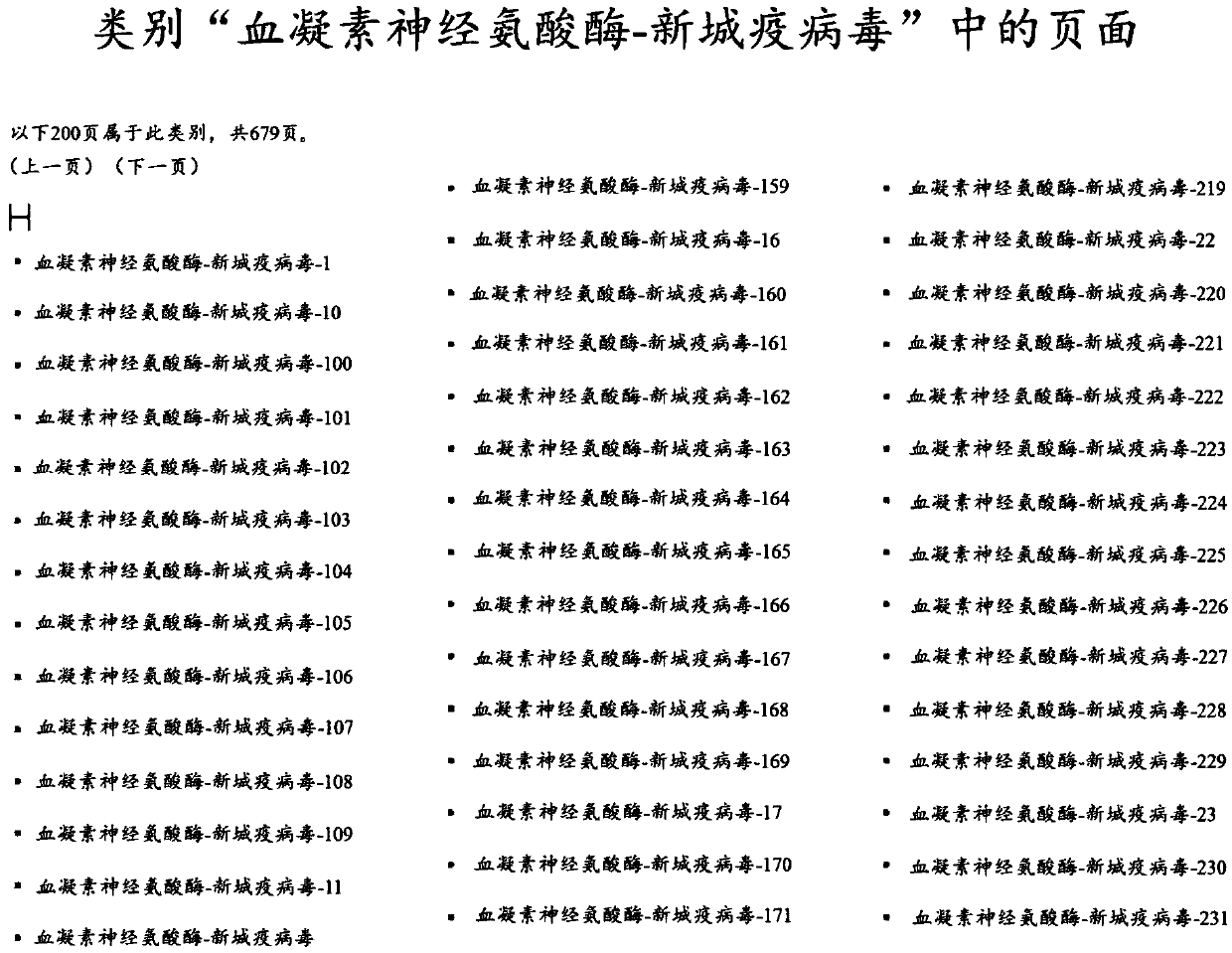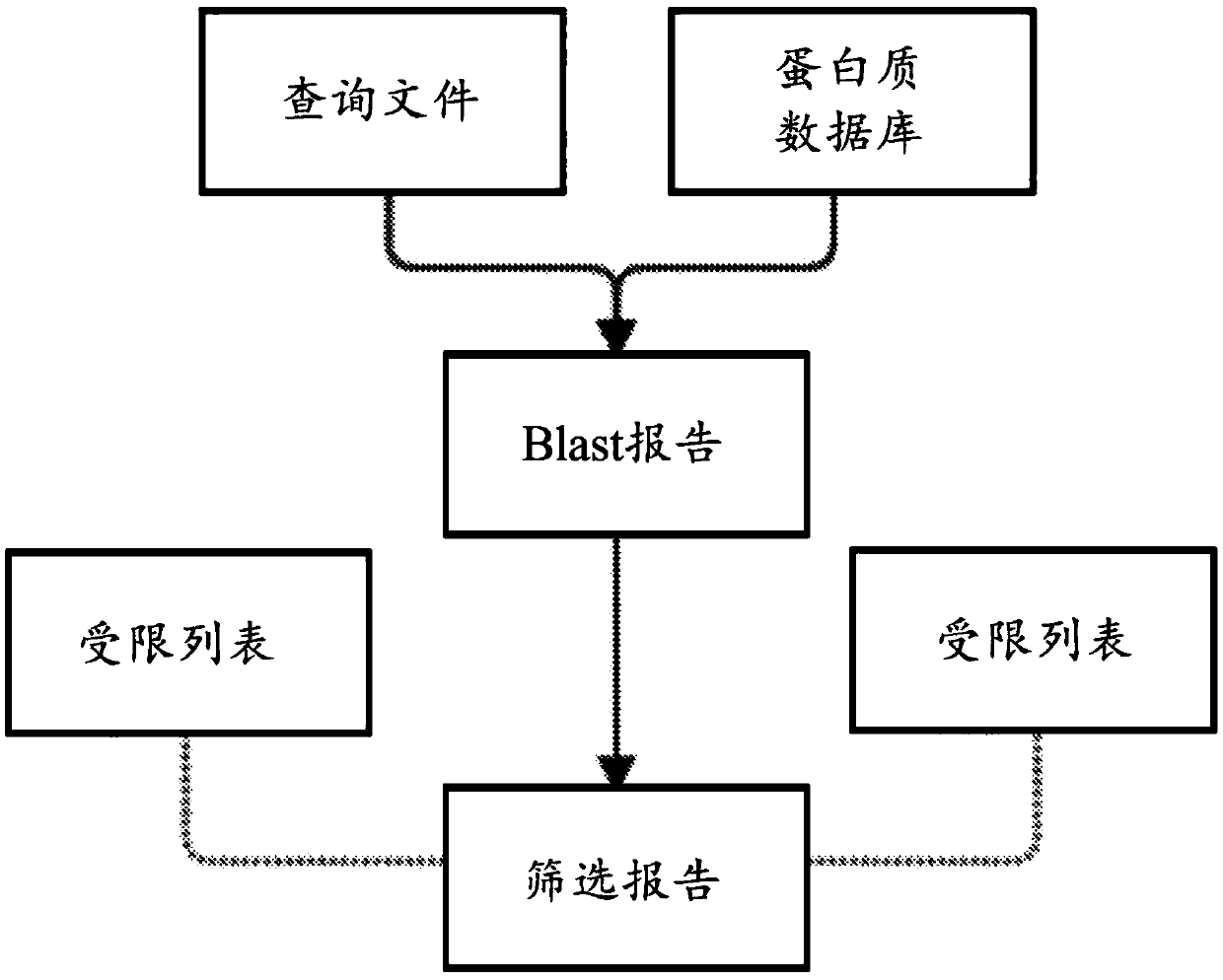Systems and methods for automated annotation and screening of biological sequences
A biological sequence, automatic generation technology, applied in general control system, sequence analysis, bioinformatics, etc., can solve problems such as lack of
- Summary
- Abstract
- Description
- Claims
- Application Information
AI Technical Summary
Problems solved by technology
Method used
Image
Examples
Embodiment 1
[0108] Example 1: Sequence Annotation
[0109] A biological sequence is received by a processor unit. In this embodiment, the biological sequence is a protein sequence. The processor unit accesses the protein database and identifies protein sequences that match the received protein sequences. The processor unit receives information related to various features of the protein sequence. Features include: nucleic acid sequence related to protein sequence, protein sequence, protein name, strain source information, link to sequence database (e.g., NCBI), sequence database accession number, identical sequence (protein or nucleic acid), similar sequence (protein or nucleic acid), source of disease (e.g., virus, bacteria), taxonomic description of the organism (e.g., kingdom, phylum, class, order, family, genus, species), host information (e.g., human, mammal, bird , insects), scenario or route of harmful interaction (eg, ingestion, inhalation), symptoms and degree of concern. In t...
Embodiment 2
[0112] Example 2: Sequence Screening
[0113] refer to Figure 3A , the processor receives machine instructions in the form of a query file containing biological sequence information, in this case nucleic acid information. The processor also communicates with nucleic acid and protein databases. The processor accesses nucleic acid and protein databases. A BLAST-processed report is generated listing identical and similar sequences identified as being related to some or all of the queried biological sequence. Sequences from the BLAST-processed reports are then queried against databases containing sequence annotations that identify sequences related to pest sequences (proteins or nucleic acids), also referred to as the "restricted" list. A screening report is generated in the form of a user interface summarizing the results of these processes. Screening reports are transmitted in the form of machine instructions for the user interface. The processor receives specific instruct...
Embodiment 3
[0114] Example 3: Prescreening for Specific Genomes
[0115] Access to more than 500 nucleotides in the genome of Variola major or Variola minor is restricted by World Health Organization (WHO) policy. Those who need longer sequences must apply for and obtain permission from the WHO before they can be synthesized. Due to the unique nature of smallpox, only the genomes of variola major and variola minor, as well as vaccinia and other closely related orthopoxviruses, were prescreened. Nucleic acid sequences were evaluated using the general biosafety screening procedure of Example 2 and the genome of orthopoxviruses. This screening occurs in less than 1 second (by blastx on commodity hardware). Vaccinia and other orthopox reference sequences were included to ensure that the requested sequence had maximum homology to smallpox before an alert was issued (similar to the 2010 HHS guidelines 'best match' criteria). This can optionally be done during the order quote generation proce...
PUM
 Login to view more
Login to view more Abstract
Description
Claims
Application Information
 Login to view more
Login to view more - R&D Engineer
- R&D Manager
- IP Professional
- Industry Leading Data Capabilities
- Powerful AI technology
- Patent DNA Extraction
Browse by: Latest US Patents, China's latest patents, Technical Efficacy Thesaurus, Application Domain, Technology Topic.
© 2024 PatSnap. All rights reserved.Legal|Privacy policy|Modern Slavery Act Transparency Statement|Sitemap



